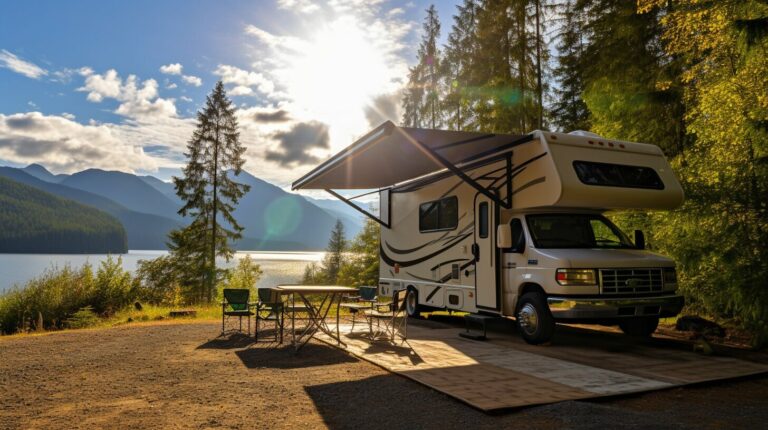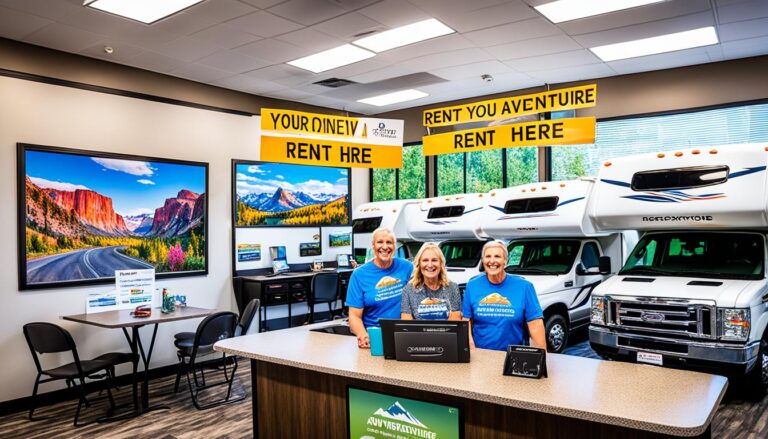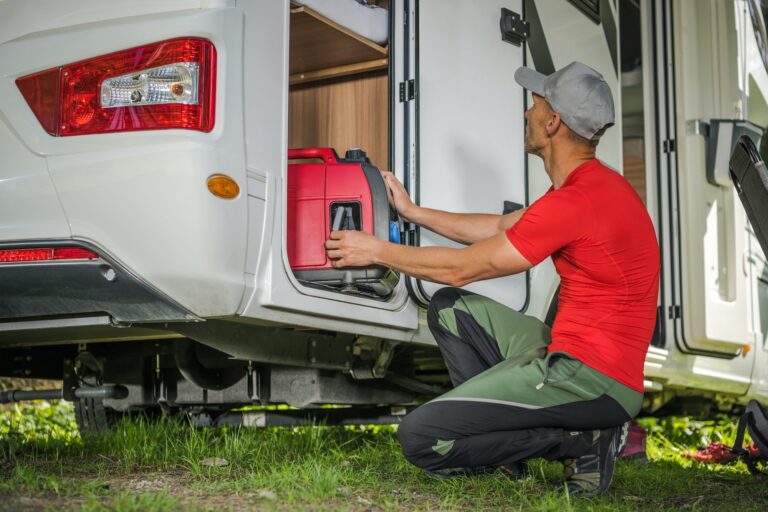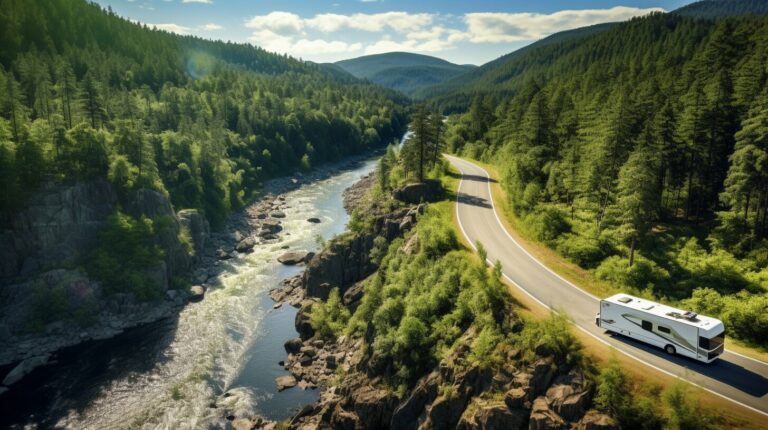Being an RV owner means you have to keep your vehicle in great shape. This is crucial for safe and fun camping trips. This detailed RV maintenance checklist helps you keep your vehicle in top shape. It guides you through the important steps to maintain your RV. This means you can fix any small problems before they get big. It also helps keep your RV’s value high. And you get to enjoy lots of adventures on the road.
Key Takeaways
- Establish a regular RV maintenance routine to extend the lifespan of your recreational vehicle.
- Perform pre-trip inspections to identify and address any issues before hitting the road.
- Maintain your RV’s engine, drivetrain, and exterior to ensure safe and reliable performance.
- Regularly clean and organize the interior to keep your RV comfortable and well-maintained.
- Properly winterize and store your RV to prevent damage during the off-season.
Importance of Regular RV Maintenance
Keeping your RV well-maintained is key for its long life and keeping you safe on the road. Doing regular checks, services, and upkeep makes your RV last longer. It keeps you and your family safe, and it makes trips more fun.
Prolonging the Life of Your RV
Checking things often helps you spot and fix problems early. This saves you from big repair bills later. Always look at fluids, tires, and the engine. This stops your RV from suddenly breaking down. It makes your RV last longer.
Ensuring Safe and Enjoyable Camping Trips
Safety first with your RV. Regular checks on things like electric and plumbing keep you safe. This lowers the chance of accidents on your camping trips. A well-kept RV also means everyone is comfortable. You get to focus on fun and making memories.
“Neglecting RV maintenance can not only shorten the lifespan of your vehicle but also put you and your loved ones at risk. It’s a small investment of time and money that can pay off tremendously in the long run.”
Regular rv inspection, rv servicing, and camper upkeep means worry-free outdoor adventures. Your RV will always be ready for your next trip.
Pre-Trip Inspection Checklist
Before you go on your next camping trip, check your RV carefully. This pre-trip checklist is vital. It helps you find and fix problems before they spoil your adventure. You can then enjoy a more RV-friendly journey with peace of mind.
Checking Fluid Levels and Tires
First, inspect your RV’s fluid levels. Check engine oil, transmission fluid, and more. Fill up what’s low to keep your vehicle working well and avoid costly repairs. Don’t forget to look at your tires. Make sure they are properly inflated and have good tread depth. If needed, change them for a safe ride.
Testing Electrical Systems and Appliances
Now, let’s check your RV’s electrics and gadgets. Turn on lights, the fridge, and AC. Testing all electrical components helps catch any issues early. This ensures your RV’s electrical system and appliances won’t surprise you on the road.
- Check the battery charge level and connections
- Inspect the wiring for any signs of wear or damage
- Test the operation of the power converter and inverter
- Verify the proper functioning of all lights, outlets, and other electrical accessories
Using this pre-trip RV inspection checklist keeps everything in check. It makes your RV adventure-ready, lessening the chance of breakdowns or safety issues. With this, you can concentrate on making great memories with your family.
“Proper maintenance and regular inspections are the keys to keeping your RV in top condition and ensuring a safe, enjoyable camping experience.”
Engine and Drivetrain Maintenance
Proper maintenance is key for your RV’s engine and drivetrain. It greatly affects how well your vehicle performs and how long it lasts. Keep up with regular care to enjoy smooth rides on your camping trips.
Routine Oil Changes
Getting regular oil changes is crucial for your RV. It keeps the engine working well. Changing oil and filters as needed prevents early damage and expensive fixes.
Inspecting the Drivetrain
It’s also vital to often check your RV’s drivetrain. This includes the transmission, differentials, and U-joints. Make sure they have enough fluids and are not showing signs of wear or damage. Acting fast on any problems can avoid bigger issues.
| Maintenance Task | Recommended Frequency |
|---|---|
| Engine Oil Change | Every 5,000-7,500 miles or per manufacturer’s recommendations |
| Transmission Fluid Change | Every 30,000-50,000 miles or per manufacturer’s recommendations |
| Differential Fluid Change | Every 30,000-50,000 miles or per manufacturer’s recommendations |
| U-joint Inspection | Annually or during regular service visits |
Stick to the maintenance plan for your RV’s engine and drivetrain. Regular rv servicing, motorhome maintenance, and using an rv repair guide keeps your recreational vehicle running well. Remember, consistent care is vital.
“Proper engine and drivetrain maintenance is the key to enjoying worry-free camping trips in your RV.”
Exterior Care and Upkeep
Looking after your recreational vehicle (RV) outside is key. This helps it keep its good look and avoid damage from the weather. You should regularly clean and wax the RV. Also, check the body closely, along with the awnings and other parts, to spot possible damage early.
Cleaning and Waxing the RV Body
Cleaning and waxing your RV often is a must. Start by washing the whole body well. Focus on the dusty and grimy spots, like the front end and lower areas. Use the right cleaning solution and a soft brush to scrub away dirt gently.
After your RV is spotless, apply a good wax. This shield the paint from the sun, reduces fading, and protects it from the elements. Plus, waxing keeps your RV shiny and makes cleaning it later much easier.
Inspecting and Maintaining Awnings
Awnings are crucial for providing shade and shelter. Check them out often for any wear such as tears, cracks, and loose parts. Clean the fabric with a gentle soap and water solution. Make sure all the mechanisms work smoothly. Fix any problems you find right away to avoid bigger issues and keep the awning working as it should.
By following an RV maintenance checklist, you can make your RV’s exterior look great. This boosts its look and life span. Taking care of your RV and sticking to your travel trailer checklist keeps it a top priority in the long run.
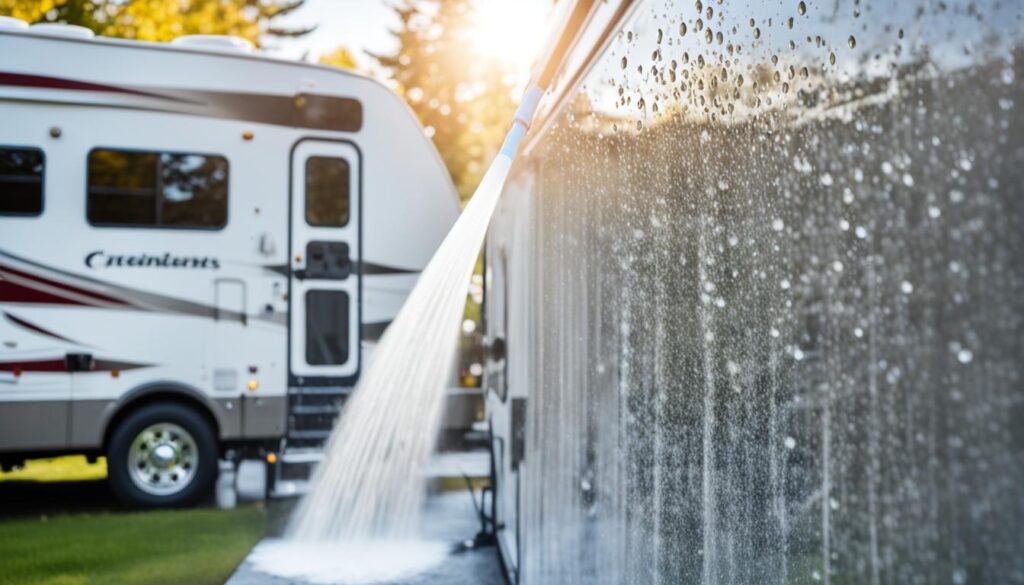
“Keeping your RV’s exterior in pristine condition is not only about aesthetics, but also about protecting your investment and ensuring a safe and enjoyable camping experience.”
RV Maintenance Checklist
Making sure your RV is well-kept is key to a great camping experience. A motorhome, travel trailer, or fifth-wheel, needs regular upkeep. By following a set checklist, you can extend your RV’s life and stay worry-free on your travels. This list includes important tasks and checks to keep your RV in prime shape for all trips.
Exterior Inspection
Start by looking over the outside of your RV. Make sure the tires are inflated and have good tread. Check the wheel bearings and lug nuts for any damage. Also, check all the seals around doors, windows, and slide-outs to keep out water.
Interior Systems Check
Then, move inside and check all the electrical systems. Test the lights, outlets, and appliances. Make sure the propane system works by checking the stove, oven, and furnace. Look over the water tanks and pipes for leaks or clogs.
Mechanical Maintenance
For mechanical upkeep, change the engine oil and filter. Rotate the tires and check the brakes, suspension, and steering. Remember to inspect and service the generator as needed.
Cleaning and Cosmetic Care
To keep your RV in top condition, clean the outside, wax it, and care for the awnings and slideouts. Inside, clean all surfaces, floors, and cabinets. Keep storage areas neat and free of unnecessary items.
By sticking to this RV maintenance checklist, you’ll be set for your next trip. Regular checks and maintenance not only extend your RV’s life but also let you fully enjoy your camping adventures.
Interior Cleaning and Organizing
Taking care of the inside of your RV is just as important as the outside. Doing deep cleans, getting rid of odors, and organizing storage makes your RV living space comfortable. This ensures a great camping trip.
Deep Cleaning and Deodorizing
Keeping your camper clean is vital. Begin with a thorough vacuuming of floors, seats, and curtains. This removes dirt and pet hair. Then, use gentle, RV-approved cleaners on all hard surfaces. This includes countertops and cabinets. It keeps everything looking good and stops dirt from piling up.
You should focus on spots that might smell bad. These can include the fridge, microwave, and bathroom. Use RV deodorizer or baking soda to get rid of any bad odors. Your RV will smell fresh wherever you go.
Organizing Storage Spaces
Good organization is crucial for your RV. Use shelves, bins, and cubbies to store your stuff in an order. Put labels on containers. Also, set places for things like kitchen stuff and outdoor gear.
Make sure to get rid of things you don’t need. This helps keep your RV clean and makes it easier to find what you’re looking for.
| Task | Frequency |
|---|---|
| Vacuum interior | Weekly |
| Wipe down surfaces | Monthly |
| Deodorize | Bi-weekly |
| Organize storage spaces | Quarterly |
Keep your RV tidy and cozy with regular care. By having a set schedule and a smart checklist, you’ll make your RV life better. It’s about enjoying your adventures and taking care of your home on wheels.
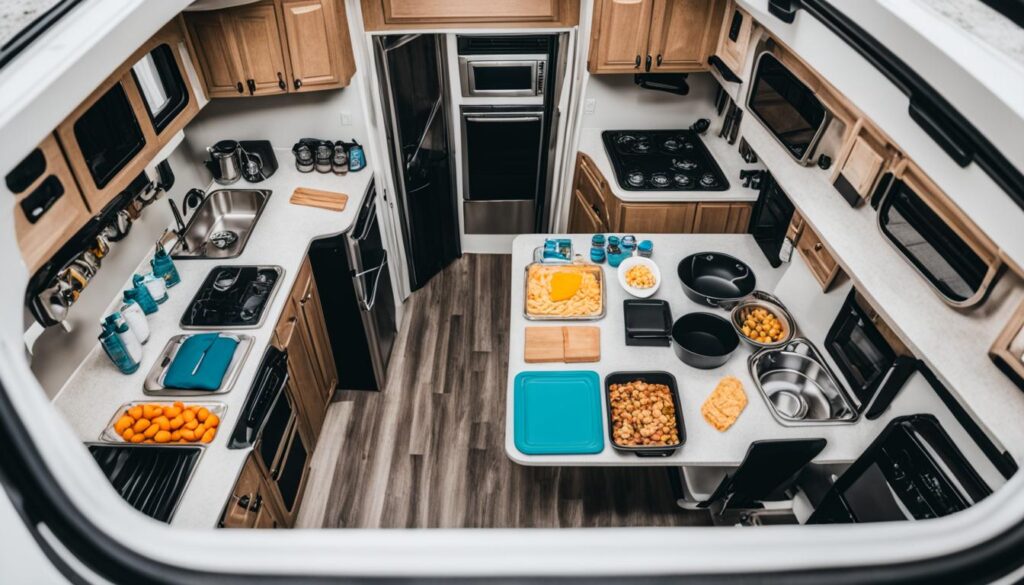
Winterization and Storage Tips
As the cold months near, preparing your RV for winter is key. It ensures your vehicle lasts and is ready for spring camping. By using the right steps, you can protect your RV from winter’s harsh elements.
Draining and Protecting Systems
Start by draining all water systems. This includes the tank, heater, and pipes. This step is vital to prevent any damage from freezing. After that, add RV antifreeze for extra protection.
Covering and Securing
Invest in a good cover that fits your RV. It will protect the exterior from snow, ice, and the sun. Make sure to secure the cover well against strong winds.
Proper Storage Preparation
- Clean and deodorize the inside to avoid mold.
- Check the tires and inflate them properly to prevent flat spots.
- Store the battery in a cool, dry place to keep it charged.
- Cover vents and windows to block out pests and dust.
- Pick a safe, flat storage location, like a facility or covered area.
Use this rv maintenance checklist for winter prep and storage. Your motorhome, camper, or rv repair guide will be primed for spring. This ensures a smooth and safe rv preventive maintenance experience on your next trip.
“Proper winterization is key to preserving the condition of your RV and ensuring it’s ready for your next adventure.”
Finding Reliable RV Service Centers
Keeping your RV in top shape means choosing the right service center. These places have skilled technicians. They can check, fix, and maintain your RV well. This helps your RV last longer and be ready for your next camping trip.
Importance of Professional Maintenance
Regular maintenance keeps your RV safe and running well. Technicians at these service centers know what they are doing. They have the right tools to look for and fix any problems. This keeps your RV in great shape, making your travels smoother and more enjoyable.
Investing in good maintenance is key for an RV owner. Getting regular checkups, fixing problems early, and preparing for winter are vital steps. A reliable service center will help you keep your RV safe and fun to use.

